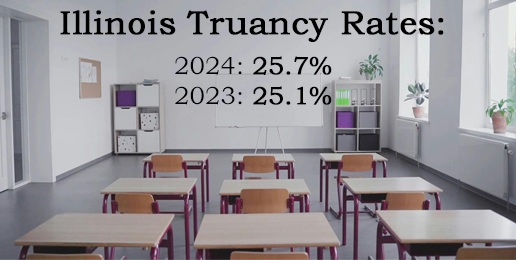
What would your response be to a grocery store that noticed a drop-off in customers – so much so it was affecting the store’s existence – and the store pressured local city council members and the mayor into requiring locals to shop at their store?
Sounds ludicrous.
A grocery store should earn its customers’ loyalty, you might think. It’s the right of a shopper to compare and choose the store that offers what they are looking for at the price they can afford, wouldn’t you say?
It’s not the city council or the mayor’s place to force citizens to shop at a particular store over another. It’s a part of America’s “free enterprise” economic system. It just makes sense.
Now, suppose a local education source is experiencing a slowdown in customers. No matter how much the administration and staff are paid or how many niceties are offered, they still can’t get customers to commit to them. As a result, they go to the state elected officials and demand that all citizens send their children to that particular school. If they don’t, the parents could be punished with jail time.
Also sounds ludicrous, right?
But that’s exactly what is happening to Illinois’ government-funded school system. For various reasons, a growing number of parents are refusing to send their children to local government schools and choosing to find education resources outside the traditional system, leaving the public system with a shocking absence rate.
In Illinois, where the chronic absenteeism rate is defined as missing 10 percent or more school days without a valid excuse, the chronic truancy rate is creeping up to 30%. Among low-income students, the number is even higher, at 38% chronic absenteeism.
That means nearly eight are considered chronically truant in a normal class size of 20 lower-income students in Illinois.
Before the pandemic, Illinois’ chronic absenteeism rate was closer to 18%.
The dramatic rise in chronic absenteeism is costing Illinois government schools thousands, if not millions, of dollars each year. Federal and state funds for government schools are distributed according to several factors, including the district’s average daily attendance.
The lower the daily attendance, the fewer subsidies there are for the schools.
So, it behooves government schools to round up students in the district who aren’t attending their schools—including children of school age who are not enrolled in government schools.
And that’s a significant reason why Illinois lawmakers are working with government schools to account for children of school age whose parents claim they are “homeschooling” and not listing their names with a state education agency.
The government school system is losing money without those children on the state rolls, but claiming their root concern as being for those not enrolled in their schools. Those unlisted students are suspected of being “abused” or “educationally neglected” by non-caring parents or guardians.
With more and more parents rejecting what government schools offer, why are state lawmakers seriously considering demanding those parents who are choosing alternative education sources be accountable to the government school system, rather than focus on examining why they are leaving in the first place?
To refer to the previous choice example, wouldn’t it make more sense for a grocery store to figure out why its customers were going elsewhere and adjust the store’s practices and offerings to be more appealing to its customers?
In the same mindset, shouldn’t the public school system examine itself as to why parents are leaving and why more and more enrolled students are not showing up for class rather than demand that those who’ve rejected the system be accountable to it?
Perhaps truancy rates are high because a parents-versus teachers conflict has evolved.
Perhaps parents are concerned that their children are being taught theories, practices and principles with which the parents foundationally disagree.
Perhaps parents don’t trust philosophically opposed teachers with their impressionable children.
Maybe their children are developing anxiety and/or depression because of the radical views teachers hold in conflict with their parents’ teachings?
Demanding children who live within a particular state are taught to think, act and react as their administrators and teachers do with no available educational alternatives is nothing short of mental and intellectual prison for educational resistors.
The truancy rate of a school is a numerical assessment of the school itself. The higher the rate of truancy, the more that school’s administrators need to self-examine what the school offers or does not offer.
The response to fair critical action should not be forcing those outside of the system to succumb to the rejected system’s authority.
Like a failing grocery store, the government school system must re-vamp and dramatically renovate itself to appeal to its customer base.
Most importantly, those rejected have no right or premise to demand they be embraced—as long as other viable choices are available.
High truancy rates say so much about government school system failure. But will they ever learn?
Time to Speak Out!
Please do not stop praying, making calls, sending emails and spreading awareness. In a short speech on the House floor late last week, the sponsor of HB 2827 made it perfectly clear that she is bound and determined to push her legislation through the House and into law.
We must remain vigilant if we want to preserve parental rights and homeschool freedoms. Let lawmakers know how many Illinois voters oppose HB 2827.
Take ACTION: Click HERE to send a message to your state representative to ask him/her to oppose HB 2827. Encourage your local representative to address the high truancy rates in Illinois public schools instead of the infinitesimal issues (by comparison) in families that claim to homeschool.
 You may even want to kindly urge your legislator to get failing government schools in order and leave homeschoolers alone, especially since research suggests that homeschooled students actually score higher on average than public school students.
You may even want to kindly urge your legislator to get failing government schools in order and leave homeschoolers alone, especially since research suggests that homeschooled students actually score higher on average than public school students.





















